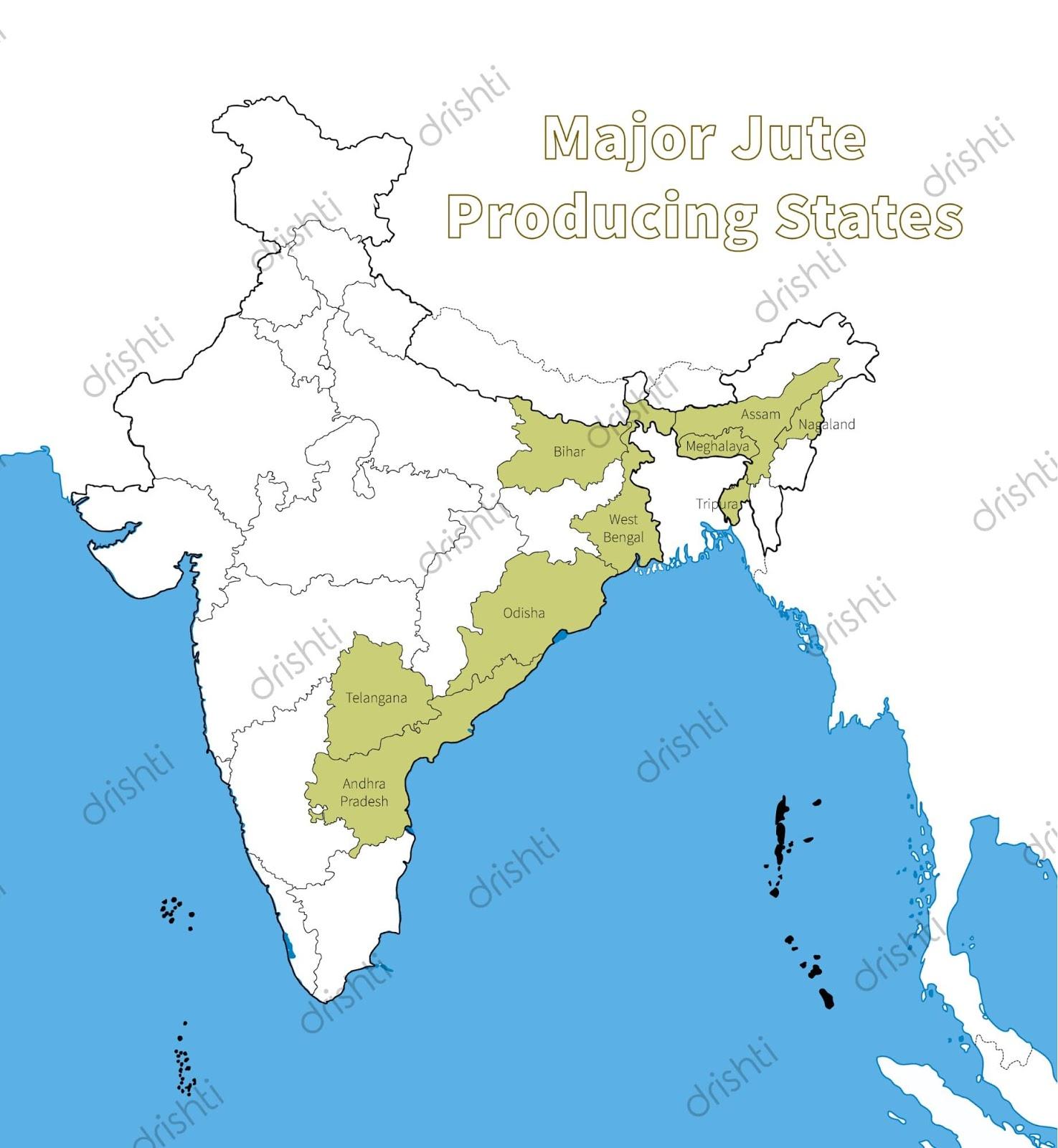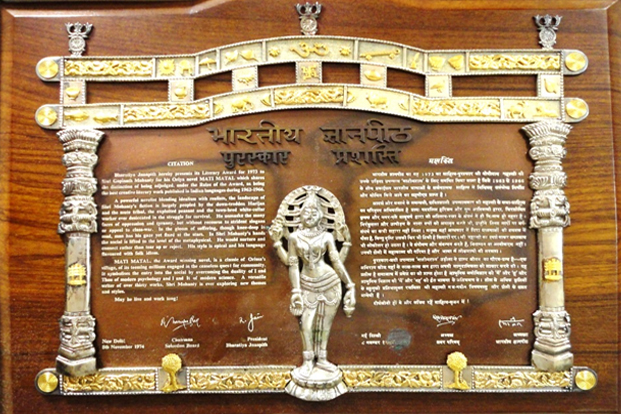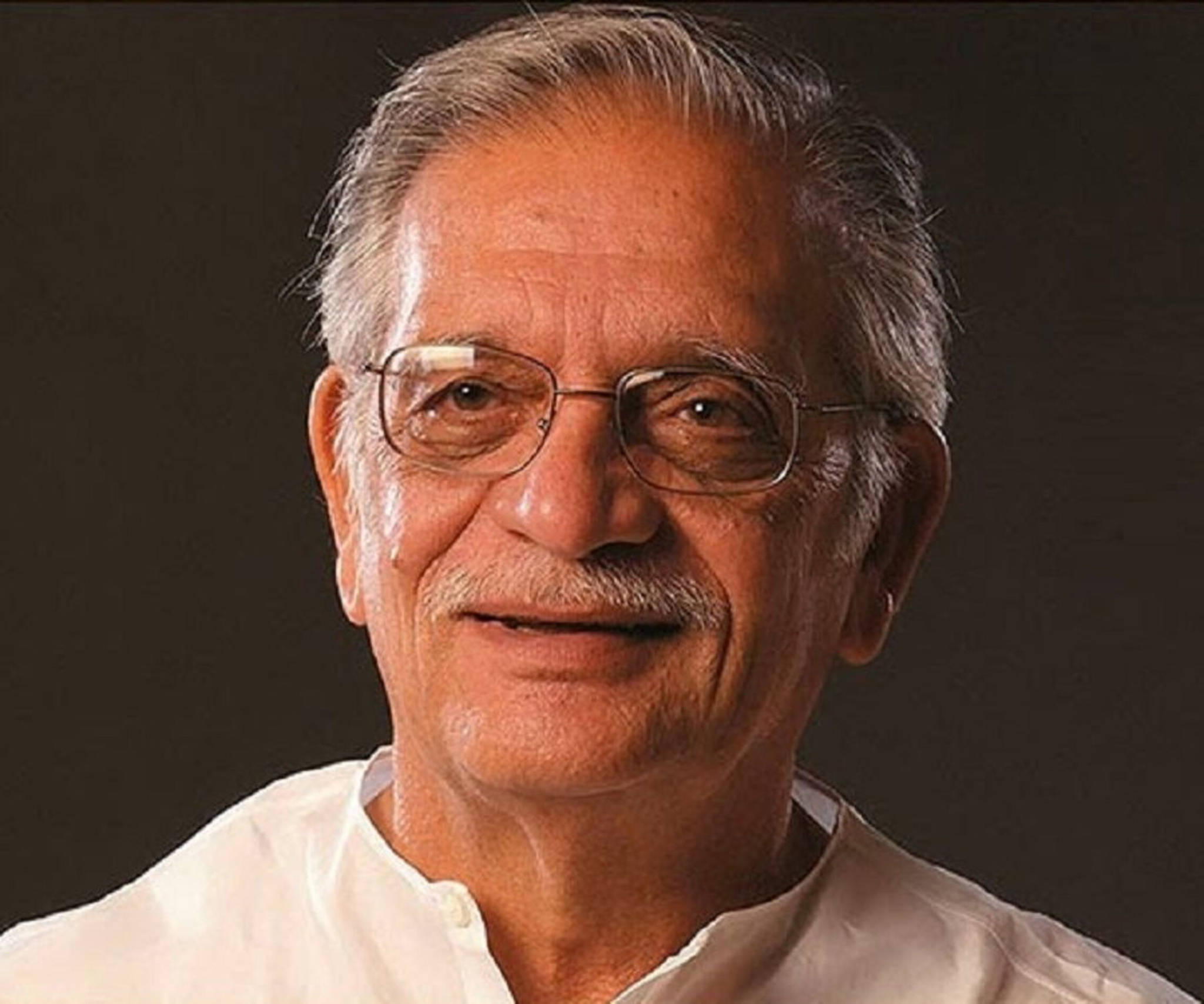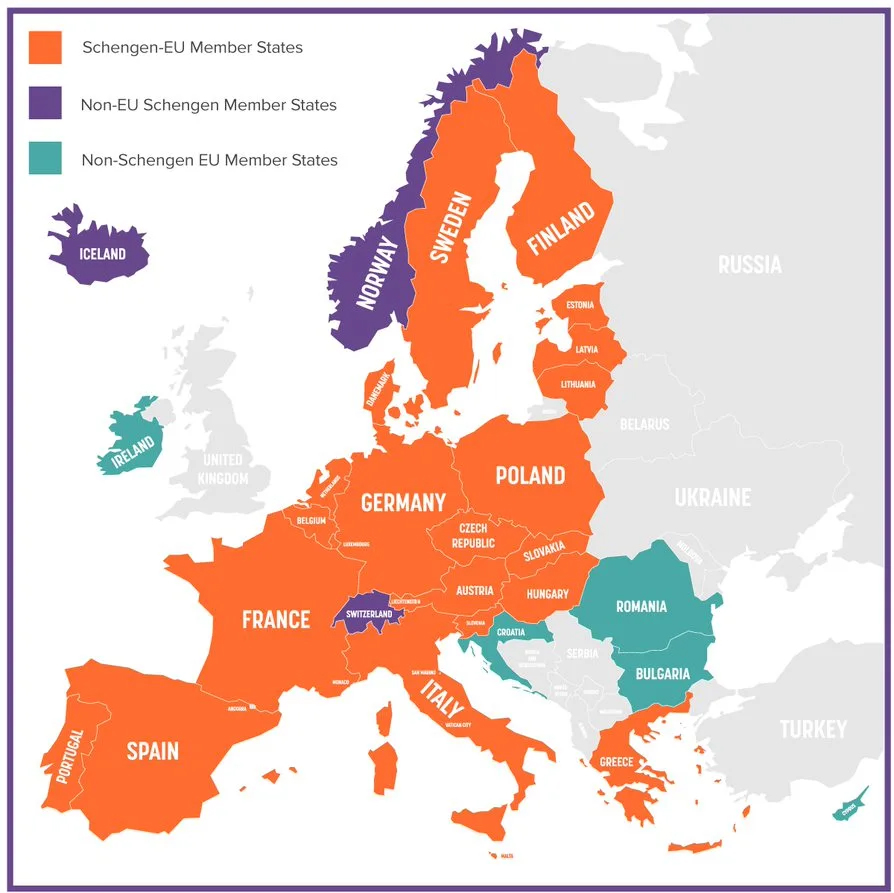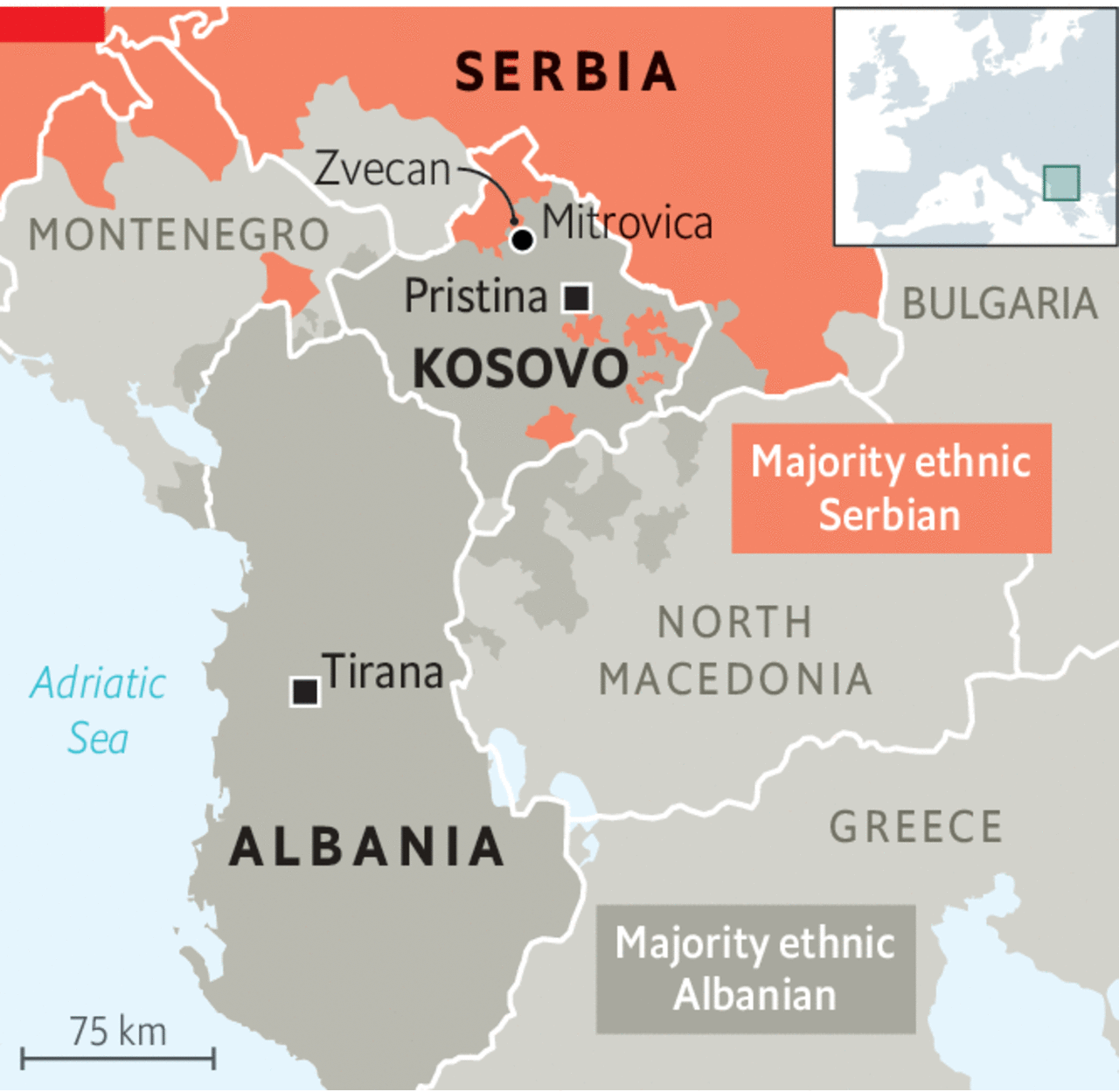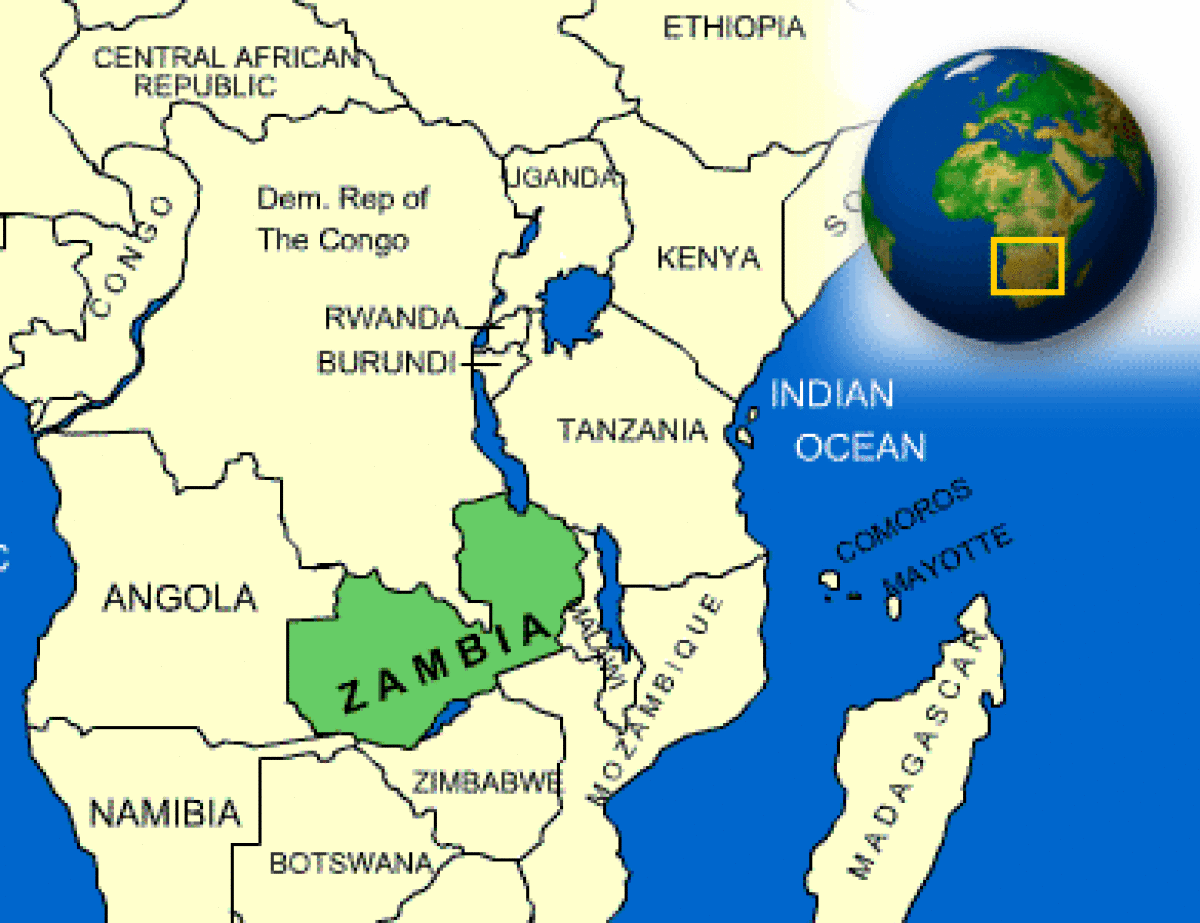Bail Under UAPA
For Prelims: Supreme Court, Unlawful Activities Prevention Act, National Investigation Agency, Cyber-terrorism, Judicial review
For Mains: Major Judicial Pronouncements Related to Bail Provisions under UAPA, Concerns Related to UAPA.
Why in News?
Recently, the Supreme Court denied bail to an accused involved in an alleged Khalistan module, stating that the principle of 'bail is rule, jail is the exception' is not applicable under the Unlawful Activities Prevention Act (UAPA).
How the Provision of Bail Evolved under UAPA?
- 2008: The UAPA Amendment Act, 2008 introduced Section 43D (5), which required a Court to deny bail if there were reasonable grounds to believe that the case against the accused was prima facie true.
- It requires the accused to convince the court that it is unreasonable to consider the accusations as prima facie true.
- By shifting this burden onto the accused, the fundamental principle of criminal law, which presumes innocence until proven guilty, is altered within the framework of the UAPA.
- 2016: In the Angela Harish Sontakke v State of Maharashtra, the judiciary granted bail despite Section 43D (5)'s stringent provisions, considering the extended period of custody and the likelihood of a swift trial, emphasising the need for balance between the alleged offence and the accused's time in jail.
- 2019: The National Investigation Agency v Zahoor Amhad Shah Watali judgment provided a narrow interpretation of Section 43D (5), stating the court must accept the NIA's version of events without delving into the merits of the case, thus making bail harder to secure after charges are framed by the NIA.
- 2021: In Union of India v K.A. Najeeb, the Supreme Court highlighted the possibility of granting bail based on the violation of Article 21 rights due to prolonged incarceration (being imprisoned or detained).
- The State of NCT of Delhi v Devangana Kalita case saw the Delhi High Court separating evidence from NIA inferences, leading to bail granted on the basis of the NIA's failure to establish a prima facie case.
- 2023: The Supreme Court, in the Vernon Gonsalves v State of Maharashtra case, diverged from the previous Watali ruling on the "prima facie true" test for granting bail, emphasising the need for evidence analysis.
- However, in the recent case, a two-judge bench denied the bail exclusively following the Watali precedent, overlooking the Gonsalves ruling.
- The conflicting interpretations by different benches raise questions about the consistency and application of bail provisions under UAPA.
What is UAPA?
- Background: On 17th June 1966, the President had promulgated the Unlawful Activities (Prevention) Ordinance “to provide for the more effective prevention of unlawful activities of individuals and associations”.
- The introduction of the stringent measure sparked uproar in Parliament, resulting in the government retracting it.
- Subsequently, the Unlawful Activities (Prevention) Act of 1967, which differed from the ordinance, was enacted instead.
- About: UAPA is a law that aims to prevent unlawful activities and deal with terrorism. It is also known as the "Anti-Terror law".
- Unlawful activities are defined as actions supporting or inciting the cession or secession of any part of India, or actions questioning or disrespecting its sovereignty and territorial integrity.
- The National Investigation Agency (NIA) is empowered by the UAPA to investigate and prosecute cases nationwide.
- Amendments:
- It underwent multiple amendments, in 2004, 2008, 2012 and most recently in 2019, expanding provisions related to terrorist financing, cyber-terrorism, individual designation, and property seizure.
- Related Concern:
- Low Conviction Rate: Under the UAPA, 4,690 persons were arrested between 2018 and 2020, but only 3% were convicted.
- Subjective Interpretation: The broad definition of unlawful activities allows for subjective interpretations, making it vulnerable to potential misuse against specific groups or individuals based on their identity or ideology.
- Limited Judicial Review: The 2019 amendment empowers the government to designate individuals as terrorists without any judicial review, raising concerns about due process of law and the potential for arbitrary designations.
Way Forward
- Enhanced Oversight: Implementing robust oversight mechanisms to prevent misuse of the UAPA, including regular reviews of its implementation and strengthening judicial scrutiny to ensure adherence to constitutional principles and human rights standards.
- Clearer Definitions: There is a need to refine and narrow down the definition of unlawful activities to minimise subjectivity and potential for misuse.
- Time-bound Investigations and Trials: Establish clear timelines for investigations and trials to prevent prolonged detentions and ensure efficient judicial processes.
UPSC Civil Services Examination, Previous Year Question (PYQ)
Mains
Q. The Indian government has recently strengthened the anti-terrorism laws by amending the Unlawful Activities(Prevention) Act, (UAPA), 1967 and the NIA Act. Analyze the changes in the context of the prevailing security environment while discussing scope and reasons for opposing the UAPA by human rights organizations. (2019)
Bilateral Investment Treaties
For Prelims: Bilateral Investment Treaties (BITs), Union budget 2024-25, Foreign Direct Investment (FDI).
For Mains: Bilateral Investment Treaties, Significance of FDI for Indian Economy.
Why in News?
While presenting the interim Union budget 2024-25, the Indian Finance Minister stated that India will be negotiating Bilateral Investment Treaties (BITs) with its trade partners to boost the inflow of Foreign Direct Investment (FDI).
- This announcement comes at a time when India’s bilateral treaties have dried up, more so, since the adoption of the Model BIT in 2016.
What are the Bilateral Investment Treaties (BITs)?
- About:
- BITs are reciprocal agreements between two countries to promote and protect foreign private investments in each other’s territories.
- In the mid-’90s, the Indian government initiated BITs to offer favourable conditions and treaty-based protection to foreign investors and investments.
- Minimum Guarantees:
- BITs establish minimum guarantees between the two countries regarding the treatment of foreign investments, such as,
- National treatment (treating foreign investors at par with domestic companies)
- Fair and equitable treatment (in accordance with international law)
- Protection from expropriation (limiting each country’s ability to take over foreign investments in its territory).
- BITs establish minimum guarantees between the two countries regarding the treatment of foreign investments, such as,
- Arbitration under BITs:
- BITs generally provide a mechanism for settling disputes between investors and the country of investment.
- The most preferred mode of settling such disputes is arbitration, where parties agree to have their dispute decided by a neutral person (the arbitrator) instead of going to court.
- History:
- The first BIT signed by India was with the UK in 1994.
- The BIT regime gained attention in the year 2010 with the settlement of the first-ever investor treaty claim filed against India.
- In 2011, India suffered its first adverse award in a dispute arising out of the Australia-India BIT (White Industries v Republic of India) where the Indian government was ordered to pay USD 4.1 million by the International Chamber of Commerce.
- By 2015, India faced 17 known BIT claims, notably including one with Cairn Energy Plc, a British oil and gas company, resulting in a USD 1.2 billion award against the Indian government.
- Given the burden that was being levied on the public exchequer, the government was compelled to revisit the 1993 BIT model. This led to the adoption of the 2016 model BIT resulting in the government terminating 68 of the 74 treaties it had executed until 2015 with a request to renegotiate terms based on the revised text.
- The adoption of the 2016 BIT model was seen more as a knee-jerk protectionist measure rather than a nuanced and calibrated approach to encouraging foreign investment.
What have been the Challenges with the 2016 Model BIT?
- Narrowing Definition of Investment:
- Model BIT narrowed the definition of investment that needed to qualify for BIT protection. Model BIT indicates that India proposes a narrow ‘enterprise-based’ definition for investment, whereby only direct investments are protected under the treaty.
- Besides this, the definition of investment in the Model BIT also contains a negative list, which precludes portfolio investments, interest in debt- securities, intangible rights, etc. from the definition of investment.
- Thus, the new definition does not take into account the increased scope of foreign investments in the modern era of globalisation and liberalisation.
- Exhaustion of Domestic Remedy Clause:
- Model BIT contains a clause mandating exhaustion of domestic remedy prior to initiating international arbitration proceedings.
- The 2016 model BIT provided that an investor must exhaust local remedies before taking recourse to international arbitration.
- This surely does little to increase confidence in foreign investors.
- Impact on FDI:
- The difficulties in renegotiating terms with other countries have also contributed to challenges in attracting FDI.
- FDI equity inflows in India declined 24% to USD 20.48 billion in April-September 2023.
- The total FDI — which includes equity inflows, reinvested earnings and other capital — contracted 15.5% to USD 32.9 billion during the period under review against USD 38.94 billion in April-June 2022.
- Wide Discretionary Powers to Host State:
- The treaty included a clause ensuring fair treatment of investments, prohibiting both parties from implementing measures that are clearly abusive or violate due process.
- However, what is the yardstick for assessment of violation of “due process” is not defined.
- Further, Model BIT states that if the Host State decides that the alleged breach under the BIT is a subject matter of taxation at any point in time, the decision of the Host State therein shall be non-justiciable and exempt from review by an arbitral tribunal.
- The Model BIT simplistically assumes that a foreign investor shall have complete confidence in domestic judicial interpretations and mechanisms.
- This could potentially give wide discretion to the Host State to unilaterally exclude any dispute from the jurisdiction of a tribunal, merely by asserting that the conduct in question relates to taxation.
Way Forward
- India can revisit its BIT regime to ensure it aligns with global best practices while balancing the interests of both foreign investors and the domestic economy. This may involve incorporating provisions for fair and equitable treatment, most favoured nation status, and robust dispute resolution mechanisms.
- The recommendations made by the Parliamentary Standing Committee on External Affairs in 2021, such as promoting pre-arbitration consultations and negotiations, should be implemented to facilitate the timely settlement of disputes and ensure effective representation in investor-state disputes.
- India should invest in developing local expertise in the field of investment arbitration to enhance its capacity to handle investor-state disputes effectively. This can involve training professionals and legal experts, as well as creating specialised institutions for investment arbitration.
- India should adopt a progressive approach to BITs that balances the need for investor protection with the imperative of regulatory sovereignty. This may involve incorporating provisions that promote sustainable development, environmental protection, and social welfare alongside investor rights.
UPSC Civil Services Examination, Previous Year Questions (PYQs)
Q. Consider the following: (2021)
- Foreign currency convertible bonds
- Foreign institutional investment with certain conditions
- Global depository receipts
- Non-resident external deposits
Which of the above can be included in Foreign Direct Investments?
(a) 1, 2 and 3
(b) 3 only
(c) 2 and 4
(d) 1 and 4
Ans: (a)
Development and Promotion of Jute Industry
For Prelims: Golden Fibre, Development and Promotion of Jute Industry, Jute Packaging Materials (Compulsory Use in Packing Commodities) Act 1987, Jute Geotextiles (JGT).
For Mains: Development and Promotion of Jute Industry, Major crops and cropping patterns in various parts of the country.
Why in News?
Recently, the Standing Committee on Labour, Textiles and Skill Development has presented the Fifty-Third Report on ‘Development and Promotion of Jute Industry’.
What are the Key Highlights of the Report?
- Potential of Jute Industry:
- The Jute industry occupies an important place in the national economy of India. It is one of the major industries in the eastern region, particularly in West Bengal.
- Jute, the ‘golden fibre’, meets all the standards for ‘safe’ packaging in view of being a natural, renewable, biodegradable and eco-friendly product.
- India as Major Share of Jute Production in the World:
- India is a major player in global jute production, contributing 70% of the world’s jute output.
- The Jute industry directly employs approximately 3.7 lakh workers, with around 90% of the production consumed domestically.
- About 73% of jute industries are concentrated in West Bengal (out of 108 composite jute mills 79 are in West Bengal).
- Production and Export Data (2022-23):
- In the fiscal year 2022-23, the production of jute goods reached a significant milestone, totalling 1,246,500 metric tons (MT).
- Exports of jute goods surged to 177,270 MT, constituting approximately 14% of the total production. This represents a remarkable 56% increase in exports compared to figures recorded in 2019-20.
- The rise in exports can be attributed to several factors, including increased demand for environmentally friendly and sustainable products worldwide.
- India imported 121.26 thousand MT of raw jute during the same period.
- The importation primarily stems from the preference for high-quality jute from Bangladesh, which is utilised in the manufacturing of value-added products.
- The top export markets for jute goods include a diverse array of countries such as the USA, France, Ghana, the UK, the Netherlands, Germany, Belgium, Côte d’Ivoire, Australia, and Spain.
- Major Challenges Faced by Jute Industry:
- High Rate of Procurement: Mills face a high rate of procurement, acquiring raw jute at prices exceeding their selling prices post-processing.
- This is exacerbated by a convoluted procurement process involving middlemen or traders, increasing costs further.
- Insufficient Raw Material: Despite efforts to boost jute cultivation, India still struggles with insufficient raw material supply, exacerbating procurement issues and affecting production capacity.
- Obsolete Mills and Machinery: The Jute Industry grapples with obsolete mills and machinery, necessitating technological upgrades to enhance efficiency and competitiveness.
- Fierce Competition From Synthetic Materials: Jute contends with fierce competition from synthetic materials, which offer cheaper packaging solutions, impacting demand for jute products negatively.
- Furthermore, decreased demand is witnessed due to the availability of alternative fibres like Mesta, diminishing the market for jute products.
- Labour issues and Infrastructure Hurdles: Labor issues plague the industry, particularly in West Bengal, with frequent strikes, lockouts, and disputes disrupting operations and adding to instability.
- Infrastructural bottlenecks such as inadequate power supply, transportation challenges, and limited access to capital impede the industry's sustainability efforts, hindering growth and modernization initiatives.
- High Rate of Procurement: Mills face a high rate of procurement, acquiring raw jute at prices exceeding their selling prices post-processing.
What are the Key Facts About Jute?
- Conditions Required for Cultivation:
- Temperature: Between 25-35°C
- Rainfall: Around 150-250 cm
- Soil Type: Well drained alluvial soil.
- Production:
- India is the largest producer of jute followed by Bangladesh and China.
- However, in terms of acreage and trade, Bangladesh takes the lead accounting for three-fourths of the global jute exports in comparison to India’s 7%.
- Jute crop cultivation is concentrated in three States, namely, West Bengal, Assam and Bihar accounting for 99% of the production.
- It is mainly concentrated in eastern India because of the rich alluvial soil of the Ganga-Brahmaputra delta.
- India is the largest producer of jute followed by Bangladesh and China.
- Uses:
- It is known as the golden fibre. It is used in making gunny bags, mats, ropes, yarn, carpets and other artefacts.
What are the Key Recommendations of the Standing Committee?
- Modernising and Upgrading Technology:
- There is a need to encourage jute mills to invest in state-of-the-art machinery and technology to enhance productivity and elevate product standards.
- Foster partnerships with research institutions to drive innovation and progress.
- Efficient Raw Material Procurement:
- Streamline the process of acquiring raw jute to minimise expenses. Promote contract farming initiatives and offer incentives to farmers to boost jute cultivation.
- Enhanced Quality Control and Standardisation:
- Reinforce quality control protocols to maintain uniform excellence in jute products. Establish and enforce stringent standards for jute goods.
- Skill Enhancement and Training:
- Empower jute workers with comprehensive training programs to refine their expertise.
- Place emphasis on honing skills in weaving, dyeing, and value-added processes.
- Market Expansion:
- There is a need to pioneer exploration into untapped global markets for jute products.
- Promote jute-based handicrafts and lifestyle commodities to broaden market reach.
- Research and Development Promotion:
- Allocate resources for research endeavours focused on advancing jute-related innovations.
- Encourage collaborative efforts between industry players and research entities.
- Promoting Jute Products:
- Launch awareness campaigns spotlighting the eco-friendly attributes and sustainability of jute.
- Educate consumers on the merits of choosing jute products.
- Policy Advocacy:
- Formulate policies that incentivize jute cultivation and value addition.
- Extend financial assistance to jute mills for the adoption of cutting-edge technologies.
What are the Government Schemes Related to Jute Industry?
- Export Market Development Assistance (EMDA) Scheme:
- The EMDA program, initiated by the National Jute Board (NJB), encourages manufacturers and exporters of jute products to participate in international fairs worldwide. It aims to promote the export of lifestyle and other Jute Diversified Products (JDPs).
- Jute Packaging Materials (Compulsory Use in Packing Commodities) Act 1987:
- The act was enacted to ensure the mandatory use of jute packaging material in the supply and distribution of certain commodities.
- The Cabinet Committee on Economic Affairs has extended mandatory packaging of 100% food grains and 20% sugar in diversified jute bags for the Jute Year 2023-24.
- The act was enacted to ensure the mandatory use of jute packaging material in the supply and distribution of certain commodities.
- Jute Geotextiles (JGT):
- The Cabinet Committee on Economic Affairs (CCEA) has approved a Technical Textiles Mission which includes Jute Geo-Textiles.
- JGT is one of the most important diversified jute products. It can be applied in many fields like civil engineering, soil erosion control, road pavement construction and protection of river banks.
- The Cabinet Committee on Economic Affairs (CCEA) has approved a Technical Textiles Mission which includes Jute Geo-Textiles.
- Minimum Support Price for Jute:
- Jute Corporation of India (JCI) is the Price Support Agency of the Govt. of India for jute, to protect the interest of the Jute Growers through procurement of Raw Jute under the MSP fixed by the government from time to time and also to stabilise the raw jute market for the benefit of the jute farmers and the jute economy as a whole.
- Golden Fibre Revolution and Technology Mission on Jute and Mesta:
- They are two of the government initiatives to boost jute production in India.
- Due to its high cost, it is losing the market to synthetic fibres and packing materials, particularly nylon.
- Jute SMART:
- It is an e-government initiative which was launched in December 2016 to promote transparency in the jute sector.
- It provides an integrated platform for procurement of sacking by Government agencies.
Some of Other Allied Fibers
- Sunhemp: Sunnhemp is a versatile leguminous crop with various applications. It is well-suited for producing speciality paper, ropes, twines, fishing nets, and canvas. Additionally, the army uses sunhemp to create camouflage nets for defence purposes.
- Ramie: Ramie is another natural fibre with significant potential. It is known for its strength, durability, and resistance to mildew and bacteria. Ramie fibres are used in textiles, papermaking, and industrial applications.
- Sisal: Sisal fibres come from the agave plant. They are strong, durable, and commonly used for making ropes, twines, and other cordage products.
- Flax: Flax fibres are derived from the flax plant. They are used to make linen textiles, paper, and other products.
- Nettle Fiber: Nettle fibres are obtained from the stinging nettle plant. They have been used for centuries to create textiles.
UPSC Civil Services Examination, Previous Year Question (PYQ)
Prelims:
Q.1 Recently, there was a growing awareness in our country about the importance of Himalayan nettle (Girardinia diversifolia) because it is found to be a sustainable source of (2019)
(a) anti-malarial drug
(b) biodiesel
(c) pulp for paper industry
(d) textile fibre
Ans: (d)
Q.2 “The crop is subtropical in nature. A hard frost is injurious to it. It requires at least 210 frost-free days and 50 to 100 centimeters of rainfall for its growth. A light well-drained soil capable of retaining moisture is ideally suited for the cultivation of the crop.” (2020) Which one of the following is that crop?
(a) Cotton
(b) Jute
(c) Sugarcane
(d) Tea
Ans: (a)
Q.3 The lower Gangetic plain is characterized by humid climate with high temperature throughout the year. Which one among the following pairs of crops is most suitable for this region? (2011)
(a) Paddy and cotton
(b) Wheat and Jute
(c) Paddy and Jute
(d) Wheat and cotton
Ans: (c)
Mains:
Q. Explain various types of revolutions, took place in Agriculture after Independence in India. How these revolutions have helped in poverty alleviation and food security in India? (2017)
India's Renewable Energy Vision: IREDA
For Prelims: Paris Agreement, India's Renewable Energy Vision: IREDA, World Bank (WB), Climate Change.
For Mains: India's Renewable Energy Vision: IREDA, Government policies and interventions for development in various sectors and issues arising out of their design and implementation.
Why in News?
Recently, the Indian Renewable Energy Development Agency (IREDA) addressed an international webinar organised by the World Bank (WB), shedding light on India's Renewable Energy landscape and its ambitious targets to combat Climate Change while ensuring energy security.
What are the Key Highlights of the IREDA’s Address at Webinar?
- Huge Invests to Meet Climate Goals:
- India's Nationally Determined Contributions (NDCs), or its self-defined climate pledges under the Paris Agreement, for 2030 would require Rs 30 lakh crore of investments.
- According to India's NDC goals, India pledges to reduce emissions intensity of its GDP (Gross Domestic Product) by 45% by 2030, from 2005 level and achieve about 50% cumulative electric power installed capacity from non-fossil fuel-based energy resources by 2030.
- The investment is required in manufacturing and capacity build-up for solar power, electrolysers, wind and battery space, power transmission, Green Hydrogen, hydro power and waste-to-energy sectors.
- India's Nationally Determined Contributions (NDCs), or its self-defined climate pledges under the Paris Agreement, for 2030 would require Rs 30 lakh crore of investments.
- Elevation of Rooftop Solar Sector:
- IREDA highlighted the significance of the "PM Surya Ghar Muft Bijli Yojana," a rooftop solar scheme.
- This visionary project, backed by an investment exceeding Rs. 75,000 crores, aims to solarize 1 crore households by providing up to 300 units of free electricity every month.
- The scheme not only provides substantial benefits but also fosters awareness about renewable energy, contributing to India's ambitious goal of achieving Net-Zero emissions by 2070 and Energy Independence by 2047.
- Increase in Energy Demand:
- India’s energy demand would increase significantly due to the ambitious plans of the government for the country and maximum energy demand would be met through renewable sources.
- Approximately 90% of this demand is expected to be met through renewable sources.
- Until sufficient energy storage for renewable energy is achieved, thermal energy will also be developed alongside.
What is IREDA?
- IREDA is a mini ratna company under the Ministry of New and Renewable Energy (MNRE).
- It was set up in 1987 as a specialised non-banking finance agency for the renewable energy sector.
- IREDA plays a key role in renewable energy project financing which gives confidence to the financial institutions/banks to lend in the sector.
What are the Government Initiatives Related to Renewable Energy?
- Renewable Purchase Obligations (RPO)
- PM-KUSUM scheme
- PLI scheme for Solar PV manufacturing
- Allowing up to 100% FDI under the automatic route for renewable energy.
- Atal Jyoti Yojana
- International Solar Alliance
- One Sun, One World, One Grid (OSOWOG)
- National Solar Mission
- Suryamitra Skill Development Programme
- Pradhan Mantri Suryodaya Yojana
- 'Must-run' status for RE Assets:
- A ‘must run’ status means that the concerned power plant has to supply electricity to the grid under all conditions.
Read more: IEA Report Electricity 2024, Indian Oil Market Outlook to 2030: IEA
UPSC Civil Services Examination, Previous Year Question (PYQ)
Prelims
Q. With reference to solar power production in India, consider the following statements: (2018)
- India is the third largest in the world in the manufacture of silicon wafers used in photovoltaic units.
- The solar power tariffs are determined by the Solar Energy Corporation of India.
Which of the statements given above is/are correct?
(a) 1 only
(b) 2 only
(c) Both 1 and 2
(d) Neither 1 nor 2
Ans: (d)
Exp:
- Silicon wafers are thin slices of semiconductor, such as a crystalline Silicon (c-Si), used for the fabrication of integrated circuits and, in photovoltaics, to manufacture solar cells. China is by far the world’s largest producer of Silicon, followed by Russia, the United States, and Brazil. India does not figure among the top five producers of Silicon and Silicon wafers. Hence, statement 1 is not correct.
- Solar tariffs are determined by the Central Electricity Regulatory Commission and not by Solar Energy Corporation of India. Hence, statement 2 is not correct.
- Therefore, option (d) is the correct answer.
Q2. ‘Net metering’ is sometimes seen in the news in the context of promoting the (2016)
(a) production and use of solar energy by the households/consumers
(b) use of piped natural gas in the kitchens of households
(c) installation of CNG kits in motor cars
(d) installation of water meters in urban households
Ans: (a)
Mains
Q. India has immense potential of solar energy though there are regional variations in its developments. Elaborate. (2020)
Jnanpith Award 2023
Why in News?
The Jnanpith selection committee announced that the 58th Jnanpith Award will be given to two writers, Sanskrit scholar Jagadguru Rambhadracharya and Urdu poet and lyricist Gulzar, for 2023.
- It is the second time the award is being given for Sanskrit and the fifth time for Urdu.
What is the Jnanpith Award?
- About:
- The Jnanpith Award is India's oldest and highest literary award. It's given annually to an author for their "outstanding contribution towards literature". The award was established in 1961 and first awarded in 1965.
- The Award considers both English and other Indian languages. However, eligibility is restricted to Indian citizens. It is not given posthumously.
- It is presented by Bharatiya Jnanpith to recognize outstanding contributions to Indian literature.
- Bharatiya Jnanpith, established in 1944 by Sahu Shanti Prasad Jain and his wife Rama Jain, is a prestigious literary and research organization headquartered in New Delhi, India.
- It is renowned for nurturing literature and culture, it has been actively promoting literary endeavours such as awards, publications, fellowships, and research for several decades.
- Cash Prize and Recognition:
- Awardees receive a cash prize of Rs 11 lakh, a statue of Vagdevi, and a citation, honouring their literary achievements.
What are the Contributions of Gulzar and Jagadguru Rambhadracharya?
- Gulzar:
- Gulzar (Sampuran Singh Kalra) was born on 18th August 1934, in the village of Dina, Jhelum district of undivided India.
- He is one of the most respected names not just in cinema but also in literary circles. He is considered one of the finest Urdu poets of his era.
- Gulzar received the Sahitya Akademi Award (2002) for Urdu, the Dadasaheb Phalke Award (2013), the Padma Bhushan (2004), and the National Film Awards for his works.
- In poetry, he invented a new genre ‘Triveni’ which is a non-mukaffa poem of three lines.
- Some of his finest works include the song "Jai Ho" for the film "Slumdog Millionaire", which received an Oscar award in 2009 and a Grammy Award in 2010.
- Jagadguru Rambhadracharya:
- Jagadguru Ramanandacharya, is a polyglot, Hindu spiritual leader, educator, poet and writer. He was born in 1950 in Jaunpur, Uttar Pradesh and speaks 22 languages.
- Rambhadracharya is a poet and writer in several Indian languages, including Sanskrit, Hindi, Awadhi, and Maithili. He has written more than 240 books and texts in various Indian languages and received the Padma Vibhushan in 2015.
- Arundhatī, Aṣṭāvakra, Avadha Kai Ajoriya and Dashavtar are some of the literary works composed by Rambhadracharya.
- He is the founder and head of Tulsi Peeth in Chitrakoot, Madhya Pradesh.
- Tulsi Peeth is one of the leading publishers of Hindu religious literature.
- Rambhadracharya is one of the four Jagadguru Ramanandacharyas of the Ramananda sect (Sampradaya) and has been holding this position since 1982.
- The Ramanandi Sampradaya is one of the largest and most egalitarian Hindu sects in India, around the Ganges Plain, and Nepal today. It mainly emphasises the worship of Rama, as well as Vishnu directly and other incarnations.
- Jagadguru Ramanandacharya, is a polyglot, Hindu spiritual leader, educator, poet and writer. He was born in 1950 in Jaunpur, Uttar Pradesh and speaks 22 languages.
Schengen Zone
Why in News?
Recently, Kosovo achieved a significant milestone after facing delays in Schengen approval. It has secured visa-free access to the Schengen zone, the world’s largest area of free movement.
- Kosovo becomes the last non-European Union (EU) country in the Western Balkans to enjoy this privilege.
What is the Schengen Zone?
- About:
- The Schengen Agreement is a treaty signed in 1985 by five member states (Belgium, France, Germany, Luxembourg, and the Netherlands) of the European Economic Community.
- The agreement aims to create a border-free area in Europe that allows the free movement of people, goods, services, and capital called the Schengen Area, where internal border checks are largely abolished.
- All EU member states without opt-outs must join Schengen upon meeting technical requirements.
- Non-EU countries like Switzerland, Liechtenstein, Norway, and Iceland are part of Schengen through special association agreements.
- Over time, the Schengen area has grown to encompass 27 countries, spanning over 4 million square kilometres and hosting nearly 420 million inhabitants.
- The Schengen Agreement is a treaty signed in 1985 by five member states (Belgium, France, Germany, Luxembourg, and the Netherlands) of the European Economic Community.
- Benefits of Schengen:
- Schengen enables seamless travel for over 400 million individuals across member states without border checks.
- Facilitates approximately 1.25 billion journeys annually, fostering tourism, cultural exchange, and economic prosperity.
- Schengen promotes cooperation among police, customs, and border control authorities to combat terrorism and organized crime.
- For nationals of Schengen countries, visa-free travel and the absence of internal border checks enhance convenience and facilitate economic integration.
- Schengen's border-free regime symbolises European values of unity and solidarity.
Key Facts About Kosovo
- Kosovo, which has a majority Albanian population and a minority of Serbs, is a landlocked region bordered by Albania, Macedonia, Serbia, and Montenegro.
- Its capital and largest city is Pristina.
- According to the World Bank, Kosovo is a parliamentary republic and upper-middle-income country. It declared independence from Serbia on 17th February 2008 and is recognised as an independent country by more than 100 United Nations members.
- India, Brazil, China, Russia, and Mexico have not recognised Kosovo as an independent country.
- However, Serbia does not recognize Kosovo as an independent state and continues to claim it as the Autonomous Province of Kosovo and Metohija.
Read more: Kosovo-Serbia Conflict
UPSC Civil Services Examination, Previous Year Question (PYQ)
Q. Consider the following pairs : (2023)
Regions often Reason for being in news mentioned in news
- North Kivu and Ituri : War between Armenia and Azerbaijan
- Nagorno-Karabakh: Insurgency in Mozambique
- Kherson and Zaporizhzhia: Dispute between Israel and Lebanon
How many of the above pairs are correctly matched?
(a) Only one
(b) Only two
(c) All three
(d) None
Ans: (d)
Exp:
- Kivu and Ituri are related to the Republic of Congo. A war between the Republic of Congo and Rwanda started in 1994 with the genocide of 800,000 Rwandan Tutsis and Hutus. Hence, pair 1 is NOT correctly matched.
- Nagorno-Karabakh is a region of southwestern Azerbaijan. It is used to refer to an autonomous oblast (province) of the former Azerbaijan Soviet Socialist Republic (S.S.R.) and to the Republic of Nagorno-Karabakh, a self-declared country whose independence is not internationally recognized. The old autonomous region occupied an area of about 1,700 square miles (4,400 square km), while the forces of the self-proclaimed Republic of Nagorno-Karabakh presently occupy some 2,700 square miles (7,000 square km). Hence, pair 2 is NOT correctly matched.
- Kherson and Zaporizhzhia are related to Ukraine and they are related to the dispute between Ukraine and Russia. Hence, pair 3 is NOT correctly matched.
Indian National Young Academy of Science
The Indian National Young Academy of Science (INYAS) recently held its ninth Annual General Body Meeting.
- Since its establishment in 2014, INYAS has been the sole recognized academy for young scientists in India, dedicated to fostering science education and networking among young scientists.
- CSIR-National Institute of Science Communication and Policy Research (CSIR-NIScPR) is one of the constituent laboratories of the Council of Scientific & Industrial Research (CSIR) under the Ministry of Science & Technology, Government of India.
- It focuses on science communication, evidence-based policy research, and studies, publishing a range of materials and conducting research on various topics such as science policy, innovation systems, and science diplomacy.
Read more: Council of Scientific & Industrial Research (CSIR)
Badminton Asia Team Championships 2024
The Indian women’s badminton team, led by PV Sindhu and Anmol Kharb, won a historic gold medal at the Badminton Asia Team Championships 2024, which was held in Shah Alam, Malaysia from February 13 to 18.
- This was India's first-ever gold medal at the Badminton Asia Team Championships. The Indian men's team had previously won two bronze - in 2016 and 2020.
- The tournament was organized by Badminton Asia along with the Badminton Association of Malaysia as the host organiser.
- Badminton Asia is the governing body of the badminton sport in Asia under the flagship of the Badminton World Federation (BWF).
- It focuses on promoting, managing and developing the sport in Asia with principles of specificity and universality.
- Badminton Asia is the governing body of the badminton sport in Asia under the flagship of the Badminton World Federation (BWF).
- The 2024 Badminton Asia Team Championships offered valuable Race to Paris 2024 ranking points. The points are crucial for shuttlers who want to compete in the 2024 Paris Olympics.
- The 2024 Badminton Asia Team Championships also served as a qualifying tournament for the 2024 Thomas & Uber Cup Finals, which will take place in Chengdu, China.
Read more: Thomas Cup
SUFALAM 2024
SUFALAM (Start Up Forum for Aspiring Leaders and Mentors) 2024 catalysed transformative discussions, shaping the trajectory of the food processing industry towards innovation-driven growth and fostering collaborations among startups, industry, and academia. It was inaugurated by the Union Ministry of Food Processing Industries.
- The event included knowledge sessions on startup overview, food regulations, and business and financial modelling for startups.
- The panel discussion on transforming food systems focused on diversification of raw materials, climate-resilient options, and creativity in entrepreneurship to meet food safety standards and optimise supply chains.
- Startups were encouraged to play a proactive role in sourcing quality raw materials, collaborating with farmers, and venturing into protein-rich foods and sustainable packaging.
- Two pitching sessions provided opportunities for startups to present their ideas to a panel of experts and receive mentoring support.
Read More: Food Processing Sector in India
Operations of Railway Protection Force
The Railway Protection Force (RPF) is unwavering in its commitment to safeguarding railway property, passenger areas, and the well-being of travellers.
- RPF made certain commendable achievements under several operations run by it for the safety, security and comfort of passengers, like:
- Operation "Nanhe Faristey": Reuniting lost children with their families.
- Operation "Jeevan Raksha": Saving the lives of passengers from accidents on platforms and railway tracks.
- Meri Saheli Initiative: Providing security assurance to lady passengers, with legal action taken against violators.
- Crackdown on Touts (Operation "Uplabdh"): Arresting individuals and seizing future reserved railway tickets worth Rs. 44.46 lakhs.
- Operation "NARCOS": Arresting individuals and seizing narcotics.
- Operation "Yatri Suraksha": Arresting criminals involved in offences against railway passengers.
- Operation Seva: Providing assistance to elderly, sick, or injured passengers during rail travels.
Read More: Operation Mahila Suraksha
India Extends Aid to Zambia Amid Cholera Outbreak
India has stepped in to provide medical and material assistance to Zambia, grappling with a cholera outbreak.
- India dispatched water purification supplies, chlorine tablets, and oral rehydration solution (ORS) sachets to Zambia.
- Cholera is an acute diarrhoeal infection caused by ingestion of food or water contaminated with the bacterium Vibrio cholerae.
- It remains a global threat to public health and an indicator of inequity and lack of social development.
- Researchers have estimated that each year there are 1.3 to 4.0 million cases of cholera and 21,000 to 143,000 deaths worldwide due to cholera.
- Most of those infected have no or mild symptoms and can be successfully treated with ORS.
- Currently there are three World Health Organization (WHO) pre-qualified oral cholera vaccines (OCV): Dukoral, Shanchol, and Euvichol. All three vaccines require two doses for full protection.
Read more: Cholera, India's Vaccine Diplomacy

